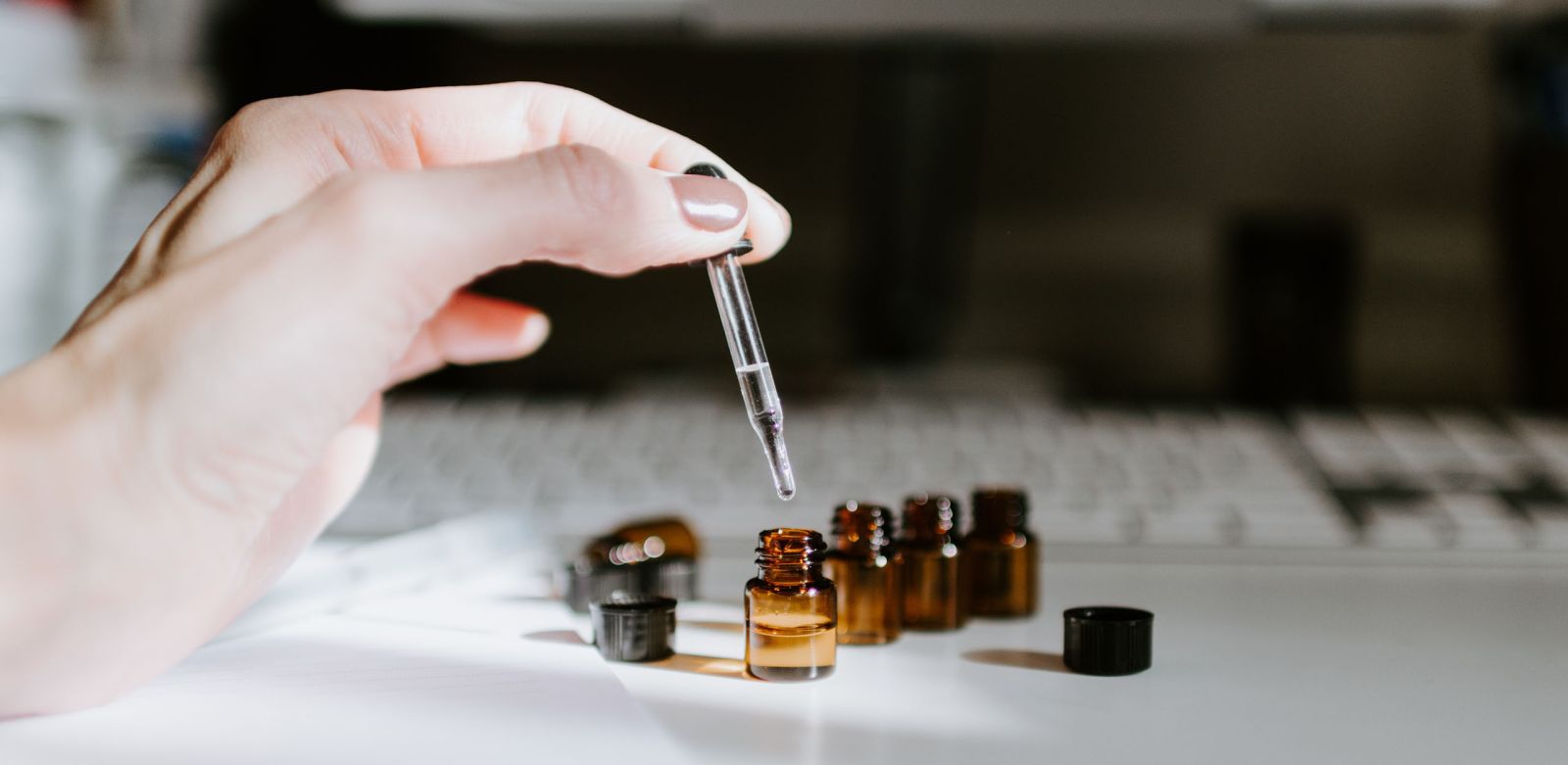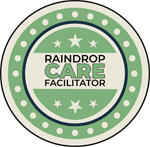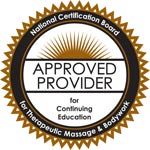This website uses cookies so that we can provide you with the best user experience possible. Cookie information is stored in your browser and performs functions such as recognising you when you return to our website and helping our team to understand which sections of the website you find most interesting and useful.
The Neuro-Auricular Technique (NAT) by Dr. David Stewart – Volume 6, Number 6
Please feel free to share this newsletter!


Raindrop Messenger
Official Newsletter of CARE
The Center for Aromatherapy Research and Education
12923 BCR 800, Marble Hill, Missouri USA 63764
(573) 238-4846
NOTE: The information in this newsletter is intended for education purposes only. It is not provided in order to diagnose, prescribe, or treat any disease, illness, or injured condition of the body or mind. Anyone suffering from any disease, illness, or injury should consult with a physician or other appropriate licensed health care professional.
The Neuro-Auricular Technique (NAT) by Dr. David Stewart – Volume 6, Number 6
by David Stewart, PhD, DNM, IASP, BCRS, LSH
Originally Posted November – December 2008
1. The Neuro-Auricular Technique (NAT) by David Stewart
The so called “Neuro-Auricular Technique” (NAT) was originated by D. Gary Young. Contrary to the implications of its name, it has nothing to do with the ears, as the word “auricular” would suggest. It does employ an “auricular” probe, a little glass rod with a tapered, blunted tip, about the size and shape of a ball-point pen, whose original purpose was to place oils precisely on the reflex points of the ear.
Gary has done several variations of Neuro-Auricular Technique. Their common denominators include use of an auricular probe to apply oils along the occipital ridge (base of the skull) and cervical vertebrae of the spine (back of neck).
The version presented here is the one Gary originally used for Parkinson’s Disease and is the one that has been done regularly in the Nova Vita Clinic in Guayaquil, Ecuador. It can be done with an auricular probe or a glass medicine dropper. Young Living does not sell the glass probes since they are considered to be medical devices. Glass medicine droppers can be purchased at any drug store and work just as well. They use medicine droppers, rather than the probes, at the Nova Vita Clinic and it was an eye dropper that Gary used at the YLEO Seminar in Guayaquil, Ecuador, February 23-29, 2008, when he demonstrated NAT to a group of Young Living Distributors. However, the version Gary demonstrated and taught at the Guayaquil Seminar is not the version presented here. (See additional comments near the end of this article.)
Outline of the Technique
Using the six oils in the sequence given below, the following seven-step procedure is done with each one. When the term, “probe” is used, it refers either to a glass medicine dropper or an auricular probe:
Oil Sequence: 1. Frankincense, 2. Valerian, 3. Vetiver, 4. Roman Chamomile, 5. Cedarwood, 6. Sandalwood
The client needs to be lying face down, preferably with a head cradle on a massage table. You as the facilitator will be sitting in a chair at the head. This technique can also be done with a client sitting backwards on a chair leaning forward on the back of the chair while the facilitator sits behind them or stands in front.
* 1. Apply oil (Starting with Frankincense) liberally across the occipital ridge (base of the skull) by dripping it from the bottle and rubbing it with your finger across entire occiput, making sure to include the oils at the center point, which is called the “locus ceruleus” or “medulla”.
* 2. Place tip of probe on the locus ceruleus. While keeping the tip of the probe on the same spot, make clockwise circles a few times with gentle pressure. Ask the receiver if the pressure is comfortable or not. If not, then lighten up.
* 3. Place tip of probe on right occipital bone and move probe side to side (parallel with ridge) working slowly toward the locus ceruleus. Then repeat starting on left occipital bone working, again, toward the center of the base of the skull, ending both times at the locus ceruleus with circular motions.
* 4. Apply same oil liberally on spine from about T3 or T4 (upper thoracic, exact starting point not important as long as it is in the upper thoracic) up the cervical vertebra to the atlas (top vertebra of spine next to skull) and locus ceruleus. Drip the oil from the bottle and smooth with your fingers to distribute the oil.
* 5. Starting with the lowest vertebra you have chosen in the upper thoracic place probe centered between a pair of vertebrae. Keeping the tip of the probe on the same spot, wave the probe up and down parallel with the spine a few times. Then move up the spine to the next vertebra probing the same way, then up to the next, and the next, until you get to the locus ceruleus (medulla) where you make a few clockwise circles. Make sure your pressure is comfortable to the receiver.
* 6. Then return to your upper thoracic starting point and place the tip of the probe on one side of the starting vertebra and rock the probe back and forth perpendicular to the spine a few times and then repeat on the other side of the same vertebra. The probe should be placed adjacent to the vertebral bone itself, not at the gap where the nerve root exits from the spine. It does not matter which side you start on first. Then after doing both sides at one location, move up to the next vertebra and do the same. Repeat this process on each vertebra through all of the cervical vertebrae until you get to the locus ceruleus where you do a few clockwise circles.
* 7. Hooking tips of the fingers along the occipital ridge, pull headward gently several times. If the client is sitting backwards on a chair, you will have to stand behind the chair, at the head, and pull upwards.
Upon completion of Step 7 above, go back to Step One with the next oil and repeat everything. Continue repeating the 7 steps above with each oil until all six oils have been applied, ending with Sandalwood. (Valerian comes after Frankincense, etc.) When you get to Vetiver (the third oil) it is too thick to readily drop from the bottle. Remove the dropper cap and administer by pouring from the bottle. There is no specific number of drops or amount of oil to be applied in this technique. None of these are hot oils. Just be sure there is enough to cover the portions of the spine involved and the base of the skull, including the locus ceruleus.
When you have completed the above seven-step procedure with each of the six oils in the order given, from Frankincense to Sandalwood, you are through. That is all there is to NAT.
Theory and Purpose of NAT
The purpose of the Neuro-Auricular Technique (NAT) is to jump-start and reconnect all of the synapses of the brain and upper spine, particularly in the locus ceruleus and vagal ganglia. The technique is applied along the occipital ridge, particularly focusing on the medullar area (center depression at base of skull) and along each vertebra of the cervical spine (the 7 vertebrae between the skull and shoulders that comprise the neck).
There are 12 pairs of cranial nerves. These are nerves that emanate directly from the brain and not from the spinal chord. The first 8 pairs go to the eyes and tear ducts, ears, nose, tongue, facial and chewing muscles, lips, mouth, teeth, and salivary glands. There are 4 pairs that extend from the brain to the throat, larynx, lungs, heart, liver, stomach, large intestine, small intestine, and shoulders that extend down and out between the top four cervical vertebrae which comprises the vagal complex. The fact that there is a pair of cranial nerves directly from the brain to the muscles of the shoulders explains why tense shoulders can lead to headaches while stress in the brain (worry, anxiety, fear, etc.) can cause tense shoulders.
Notice the chemistry of the oils Gary has chosen for NAT. Frankincense is mostly monoterpenes (for balancing and reprogramming). Valerian, Vetiver, Cedarwood, and Sandalwood are all mostly sesquiterpenes (for oxygenation of the brain and ganglia and for deleting misinformation at the level of cellular DNA). Roman Chamomile is mostly esters (for emotional releasing).
The locus ceruleus is a mass of more than 1000 nerves at the base of the brain, highly pigmented as a bluish bundle of nerves. Hence, its name: “Locus” means “location.” “Ceruleus” means “sky blue.” The locus ceruleus is the central switching station of the body. Every nerve impulse controlling our voluntary muscles as well as our organs passes through this master control station. A principal purpose of NAT is to make sure this vital nerve junction is fully functioning along with the rest of the brain.
The locus ceruleus or medulla is the only part of the brain that cannot be operated on surgically. It is the portal through which our vital life energy flows into the body maintaining physical life. If this energy flow is interrupted even for a split second by a surgeon’s knife, or by anything else, our spirits are immediately disconnected from the body and jump into the next world, which is spiritual, not physical. In other words, physical death is instant.
The vagus nerve originates from four areas of the brain and exits through the vagal ganglion at the center of the base of the skull in the vicinity of the locus ceruleus (medulla). The vagus nerve has thirteen branches that go to all the vital organs of the body including the esophagus, larynx, lungs, heart, stomach, liver, large and small intestines, spleen, and kidneys. It is through the vagus nerve that the vital functions can still be maintained in a person even though they be quadriplegic, paralyzed from the neck down.
The vagus nerve is the largest of the twelve cranial nerves. It’s name, “vagus,” means “wanderer” because it wanders throughout the organs of the throat, chest, and abdomen as a direct wire to the brain in addition to the spinal nerves that also serve these body parts.
The vagus nerve is principally involved with parasympathetic activity, which is largely involuntary and often emotional. It regulates heartbeat, is involved with the release of tears in crying, controls digestion and peristalsis of the esophagus and intestines, production of many hormones, including insulin, control of sphincter muscles, ovarian and uterine function, prostate function, and sexual responsiveness. It is the parasympathetic system that functions during healing and is mainly involved with protection, conservation, and restoration of body resources and functions.
The purpose of NAT is to fully awaken and restore full capacity to the locus ceruleus and vagal ganglion at the base of the brain and to connect all of the synapses of the brain and upper spinal cord, thus creating an environment that facilitates optimal health, healing, and bodily function.
NAT can also be used for emotional release by using oils such as Rutavala and others, as Gary did in Ecuador at the February 2008 Seminar. In this instance, Gary focused mainly on probing the locus ceruleus and vagal ganglionic areas and also on the cervical vertebrae. However, depending on information received by the facilitator (Gary) from these probings, Gary would move to other areas of the spine with different oils, including the sacrum and lower lumbar regions, according to where he felt led by the clients issues. The parasympathetic nerves of the body include, not only those originating in the brain such as the vagus nerve, but also the ganglionic centers of the sacrum.
According to Gary, the version of NAT given in these notes has been effective in correcting Parkinson’s disease. In this application, Gary has also added Melissa Oil after Sandalwood as a seventh oil to apply with the probe in the same prescribed protocol.
The version presented here with the six oils is the protocol done routinely in the Nova Vita Clinic in Guayaquil, Ecuador. As a client there in February, 2008, I received NAT every other day while there. I also observed it several times when it was performed on others and took notes, which is the basis from which this article is derived.
The reason this technique could work for Parkinson’s disease is because Parkinson’s is due to failure of the locus ceruleus to properly process neural messages and of the vagal ganglion to properly transmit its electrical signals. Since NAT is designed to restore normal vagus nerve function as well as that of the locus ceruleus, the symptoms of Parkinson’s could reasonably be expected to be reduced or disappear altogether when these two neural organs regain their healthy normal function.
At this time, medical authorities refer to Parkinson’s as “idiopathic,” which is the medical term for “cause unknown.” Doctors understand why compromise of the vagal ganglion and locus ceruleus regions would result in the classic symptoms of Parkinson’s: viz. uncontrollable tremors, stiffness of limbs, spinal rigidity, emotional instability, drooling, and the stooped postures of a typical Parkinson’s victim, but don’t know the root causes of why these nerve centers, themselves, stop functioning properly.
As for proximal causes, Parkinson’s disease can follow bouts of acute encephalitis, carbon monoxide exposure, or metallic poisoning, as well as a consequence of some prescriptions, especially Reserpine and phenothiazine drugs. However, while knowing a proximal cause can lead to measures of prevention, such knowledge becomes less important if you know a cure. In fact, knowing a cure can reveal, not only a proximal cause, but a deeper root of the problem.
In addition to possible benefits for Parkinson’s suffers, the nature of NAT also suggests that there may be benefits for any condition or malady due to malfunctions in the nerve centers of the locus ceruleus and vagal ganglion. Many neurological disorders originating from these centers could potentially benefit from NAT.
NAT is currently under development by Gary Young, its creator. He may ultimately refine and modify it considerably from what we have presented here. Gary taught NAT to a group of 340 Young Living distributors in Guayaquil, Ecuador, the last week of February 2008. I was there and assisted him in the training. What he did there was significantly different, using different oils and with a different purpose, mainly for emotional release. The only similarity in what is presented here and what he did there was in the use of the auricular probe or medicine dropper along the occipital ridge and upper spine. However, in that version he used completely different oils and probed other areas of the spine from the sacrum up by which he was able to effect some emotional releasing.
The protocol given here is what they have been doing in Gary’s clinic in Ecuador (Nova Vita) since its founding in 2007 and apparently is Gary’s original version. I personally received this technique, as given in these notes, more than a dozen times administered by clinic staff. It was from them that I learned it. It was Gary Young that told us that this version is the one, in his experience, that had been effective with Parkinson’s disease.
~^~^~^~^~^~^~^~^~^~^~^~^~^~^~^~^~^~
2. Solutions to the Sticky Business of Myrrh Caps and Thieves Drops by David Stewart
Sticky Bottle Caps on Myrrh
Do the caps on your bottles of Myrrh Oil tend to stick over time, becoming difficult or almost impossible to remove? This is because the residue of myrrh on in the cap and on the bottle oxidizes into a fairly effective adhesive. If you have this problem, try this. Put some vegetable oil or V6 oil in the cap, when it is clean, and then screw it on. The myrrh won’t oxidize and your cap will remain easy to remove.
Sticky Wrappers on Thieves Lozenges
When you first receive a metal container of Thieves Lozenges, the cellophane wrappers on each lozenge come off easily. However, after you have had them for a while or after they have been in a warm place, the wrappers for the individual lozenges become tightly glued and can only be removed with a lot of patience and effort. Here is a solution I have found. Put your tin of Thieves Drops in your freezer. So long as they are freezing cold, the wrappers are easily separated from the lozenges inside. This works even with lozenges that have long been stuck to their wrappers. You must open then when they are cold. If the drops warm up, they will stick again to their wrappers.
~^~^~^~^~^~^~^~^~^~^~^~^~^~^~^~^~^~
3. THE SALT PARADOX
By Dewey F. Millay, N.D.
The most common accepted definition for salt is the mineral compound of sodium (Na) and Chlorine (Cl), namely, Sodium Chloride (NaCl). Most people call it “table salt.”
Sodium is the most active element in the body. It is found in every cell as the basic chemical transport system of most other minerals. This absorption method is called the “Sodium-Potassium pump” which operates on the principle of re-polarization. In order to work properly in our bodies, sodium must be in balance with potassium.
Sodium is necessary for maintaining the proper water balance and blood pH in our bodies. It facilitates nerve and muscle function. Sodium is also associated in the co-transport of proteins and carbohydrates. Virtually all foods contain at least some sodium. Fruits and fresh vegetables are the best sources of both sodium and potassium. Both help to alkalize our bodies and keep them healthy.
Chlorine is the other element of salt. It is absolutely necessary for the proper digestion of proteins, as it is the main constituent of hydrochloric acid (HCl) found in the stomach. Chlorine is one of the most active elements of the Periodic Table, having the ability to combine with virtually every other element.
Salt (NaCl) is probably the most basic nutrient (after water and air) for the preservation of life. The human embryo spends its first nine months in a salty environment of amniotic fluid where it grows three billion times in weight. The serum of our blood is basically a brine saline solution. Ranchers and farmers certainly know of the value of salt blocks for their animals. So you might ask, what is all this negative advice about salt?
Ordinary Table salt Not Ordinary
Ordinary table salt (OTS) is not what you think it is. Compared to natural, pure Sodium Chloride (NaCl), it is not ordinary at all, nor is it “natural.” Most modern day salt pits are mined by using water to be mixed into a slurry producing a brine solution. The salt is then turned into a “manufactured product.” The brine is brought to a boil (at least 350 degrees F) in a vacuum while calcium sulfate is added for a period of 48 hours. Gradually the pressure is reduced and the salt begins to form into solids. Now it is placed into a centrifuge to spin off the water for drying and the addition of magnesium carbonate, silicates, and iodine.
From a chemistry standpoint, the resultant product is no longer simple salt (NaCl), but a stable compound that does not ionize well in solution, as NaCl will do and which our body can utilize. This new product will not cake or lump up with moisture like simple salt will do. Thus was derived the Morton Salt Company slogan, “When it rains, it pours.”
The key word is “silicates.” Silicates are a class of compounds of the element, silicon (Si), which is the prime ingredient in the manufacturing of glass. Silica is also the principle component of sand paper.
When ordinary table salt (OTS) is absorbed into the blood stream, it arrives in various particle sizes and fragments of the new compound that comprises OTS. These microscopic particles become abrasives to the inside of the blood vessel walls. This can be likened to sand blasting the vessel walls at bends and junctions. The arteries with the highest volume and most pressure are the first pipes to experience the abrasive effects.
Eventually areas of inflammation and lacerations, or cuts, begin to appear. This means the blood vessels bleed on the inside. At this point, the body’s damage control team goes into action and sends out platelets to stop the bleeding and to produce its own cholesterol to help the platelets stay in place and to grease the entire inflamed area.
While this is going on, a variety of inorganic and unbound, calcium molecules begin to stick to the platelets and cholesterol. As this whole mess begins to grow, your body’s damage control team builds a screen net over the area to keep it in place. These are the ingredients of vascular plaques and the cause for most heart diseases of today.
Excess sodium has been implicated as a cause of increased heart disease while health care authorities recommend salt restriction as a remedy. However, the problem may not be the sodium at all, but the modified version of salt now sold that is actually a sodium silicate and not true NaCl.
We Need salt, but Not Ordinary Table Salt
Once you understand what OTS is, it becomes obvious that OTS is a great deterrent to health, yet we need salt (NaCl) for our bodies to function. We need some other source than the silicate versions sold in super markets.
Most health food stores stock various forms of sea salt that are inexpensive and provide the basic elements we require. Look for a product that is not heat-treated. During the formation of salt in nature, it is found in crystals. Included within these crystals are other minerals our body needs. The Key Company of St. Louis, Missouri, markets a product called “Sun dried salt crystals” which contains over forty trace minerals in colloidal form. Colloidal forms are easily absorbed into our blood. I have had good results with this product in restoring a healthy mineral balance with my patients over the years.
You can order their sun dried salt by calling (800) 325-9592 or by visiting the internet at www.thekeycompany.com. I have heard of other such companies with a similar product, but my experience has been with the Key Company. Salts from evaporated sea water not only supply the NaCl you need, but a host of other vital minerals.
Importance of Trace Minerals
Young Living does not have a salt (NaCl) substitute, but does have a balanced, full-spectrum mineral product called “Mineral Essence” (YL Item #3222). It is in an ionized liquid form. If you do not like the taste, put 20 drops in a gel capsule and swallow it that way. Young Living also has a condiment to be sprinkled on your food called Juvaspice (YL Item #3279) that can substitute for the flavor of salt, but is not really a substitute for natural sodium chloride. Juvaspice contains many minerals and supports good digestion.
According to two-time Nobel Prize winner, Linus Pauling, PhD, “You can trace every sickness, every disease, and every ailment to a mineral deficiency.” Ionic minerals are the most fully and quickly absorbed form of minerals available. Lack of minerals is a leading cause for poor health, which is easily remedied by the daily use of products such as Mineral Essence, Juvaspice, and natural sea salts and the avoidance of OTS.
It was back in the 1940’s when the Morton Salt Company began the manufacture of OTS containing silicates to produce a free-flowing product and adopted their slogan, “When it rains, it pours.” Statistics show that American heart disease really began to increase in both men and women since that time. It was first published that eggs were the culprit because of their high cholesterol content, so people began to reduce their intake of eggs. However, the increase in cardiovascular disease continued to increase.
The 1940’s was also when the country began to homogenize milk. This process causes the fat globules in whole milk to be fragmented into tiny molecules that will not regroup and that resist digestion, yet manage to enter the blood stream unaltered. Homogenization releases a very powerful enzyme called “xanthine oxidase,” which attacks the lining of the arteries resulting in inflammation and irritation. This process also supports the plaque buildup of the vascular system that leads to heart disease and possible cardiac failure.
The U.S. Government subsidizes the National Milk Council advertising fund. Yet, the government does not promote natural salt crystals to be sold in commercial markets for human consumption. Does there seem to be a government conspiracy to promote heart disease in America? At the same time, the poor little egg has been blamed for all that cholesterol clogging our pipes. The egg is probably one of the best foods known to man in providing a digestible complete protein.
So there you have it: The Salt Paradox. The difference between OTS, the man-made poison we do not need and the natural forms of salt our bodies can utilize to our benefit and longevity.
~^~^~^~^~^~^~^~^~^~
NOTE: Dewey F. Millay, N.D., is a naturopathic physician residing in Rolla, Missouri. He is a Young Living Distributor and uses oils in his practice.
THE RAINDROP MESSENGER
Official Newsletter of CARE
The Center for Aromatherapy Research and Education
12923 BCR 800, Marble Hill, Missouri USA 63764
(573) 238-4846
NOTE: The information in this newsletter is intended for education purposes only. It is not provided in order to diagnose, prescribe, or treat any disease, illness, or injured condition of the body or mind. Anyone suffering from any disease, illness, or injury should consult with a physician or other appropriate licensed health care professional.
The Care Calendar
Topics covered in the Raindrop Messenger:
- Advanced Bible Oils
- AFNOR
- Allergy Season
- Allopathy
- ALOES/SANDALWOOD
- Ancient secrets of essential oils
- Annual CCI Summit
- Anointing
- Aroma Life
- Aromatherapist
- Aromatherapy
- Aromatherapy Certification
- Arthritis
- Believer
- BIBLE OILS
- Biblical Oils
- Birch Oil
- Black Widow
- Body Systems
- cancer
- CARE Chemistry
- CARE Classes
- CARE INTENSIVES
- CARE Seminars
- CARE Summit 2024!
- CARE training
- Carvacrol
- CCI Certification
- CCI Summit 2024
- CEDARWOOD
- Center for Aromatherapy Research and Education
- Chakras
- Charging for Raindrop
- Chemistry
- Chemistry of Essential Oils
- Chemistry of Essential Oils Made Simple
- Chemotypes
- cleanses
- Clover
- Continuing Education Credit
- CYPRESS
- Dangers Of Prescription Drugs
- Detoxifiers
- Developing Gratitude
- DI GIZE
- DIAMOND
- Do All You Can
- Earthquakes
- Elderberry
- ELECTROMAGNETIC FIELD
- EM FIELD
- Emotional Release
- Energize
- ENZYMES
- Essential Oils
- ESSENTIAL OILS FOR INTUITIVE PURPOSES
- Essiac tea
- Exodus Supplement
- Feelings Kit
- Flu
- Focus
- Frankincense
- FREQUENCES
- GALBANUM
- Garlic
- Gary Young
- Ginger
- Goals
- god's love
- Gold
- Gold Frankincense Myrrh
- Grapefruit
- Growth
- Habits
- Harmonies Melodies & Symphonies with Essential Oils
- Heal Your Body
- Healing
- Healing Oils Of The Bible
- Helichrysum
- HERXING
- History of Anointing Oils
- Holy Anointing Oil
- Holy Incense
- Homeopathy
- Homeostatic Intelligence
- HYSSOP
- IASP
- Institute for Energy Wellness Studies
- Integrated Aromatic Science Practitioner
- Joy
- laughter
- Lavender
- Learn Raindrop
- Lee Stewart
- Legal
- lemongrass
- linen
- Liver
- Look Ahead.
- Love
- Lyme Disease
- Mind-Body Connection
- Mint
- Myrrh
- NAT
- Natural
- Natural Molecules
- Neuro-Auricular Technique
- never give up
- new age
- Ningxia
- Ningxia Red
- Non-Nutritive
- Nova Vita
- Ocotea Oil
- Oils of ancient scripture
- Onycha
- ORAC SCALE
- Oregano
- Oregano oil
- Overcoming Diabetes
- patchouly
- Peruvian Chocolate
- Pest Control
- pheromones
- phosphoric acid
- Photoxicity
- POO-ROMATHERAPY
- Practitioner
- Preparation
- Protocel
- Pure Therapeutic Grade Essential Oil
- Quantum Physics
- Raindrop
- Raindrop certification
- Raindrop Classes
- Raindrop instructors
- Raindrop teachers
- Raindrop Technique
- Raindrop Technique Training
- Raindrop Training
- Raindrop Without a License
- RC Blend
- ringing in the ears
- Rose Essential Oil
- ROSE OF SHARON/CISTUS
- Rose Oil
- Safe Insect Repellants
- scar-b-gone
- Science Of Essential Oils Made Simple
- Sensitivities to Essential Oils
- sick building syndrome
- SPIKENARD
- Stay Positive
- staying healthy
- Success
- Supervisor Training
- Synthetic Compounds
- tansy
- Tea Tree
- The Blood Brain Barrier
- the Ecuador Clinic
- THE FIRST IMPRESSION TECHNIQUE
- the Mind-Body Connection
- THE PRAYER OF JABEZ
- The Quantum Connection
- THE SLEEP TECHNIQUE
- Therapeutic Grade
- Thieves Household Cleaner
- Thieves Oil
- Thyme
- Thyme Oil
- Tinnitus
- Tonya Peterson
- Transformation
- Transformation Oil Blend
- Twelve Questions to Ask Those Who Invite You to Join Another Company
- unresolved emotions
- valor blend
- Vitaflex
- water
- Wealth and Spirituality
- Wintergreen
- Wolfberries
- Ylang Ylang
- YLEO
- Young Living business
- Young Living Essential Oils
- Young Living Oils and Products
Read more issues of the Raindrop Messenger
In each issue of The Raindrop Messenger you will find articles and essays on a variety of topics related to health and longevity. Our hope is to be informative and, perhaps, inspiring to you for the benefit of your physical, mental, social, emotional, and spiritual life. The Raindrop Messenger is also a friendly way of keeping you abreast of CARE’s ongoing programs, activities and helpful books and videos.
The articles published in The Raindrop Messenger and in this archive are not copyrighted. You are encouraged to copy them, reprint them, and share them with friends. We would appreciate acknowledgment of their source by a statement to the effect.
By submitting this form, you are consenting to receive marketing emails from: The Center for Aromatherapy Research and Education. You can revoke your consent to receive emails at any time by using the SafeUnsubscribe® link, found at the bottom of every email. Emails are serviced by Constant Contact

I JUST WANT A RAINDROP!
Have a facilitator contact you!
The Center for Aromatherapy Research and Education, Inc. (CARE) and it's Certified Instructors have trained hundreds of Facilitators in the Raindrop Technique. Click here to get started.

Center for Aromatherapy Research and Education is approved by the National Certification Board for Therapeutic Massage and Bodywork (NCBTMB) as a continuing education Approved Provider.
CARE International Inc
12923 BCR 800
Marble Hill, MO 63764
Toll Free (800) 758-8629
Fax (573) 755-0365
Open 9:00 AM to 4:30 PM CST
Monday - Friday



